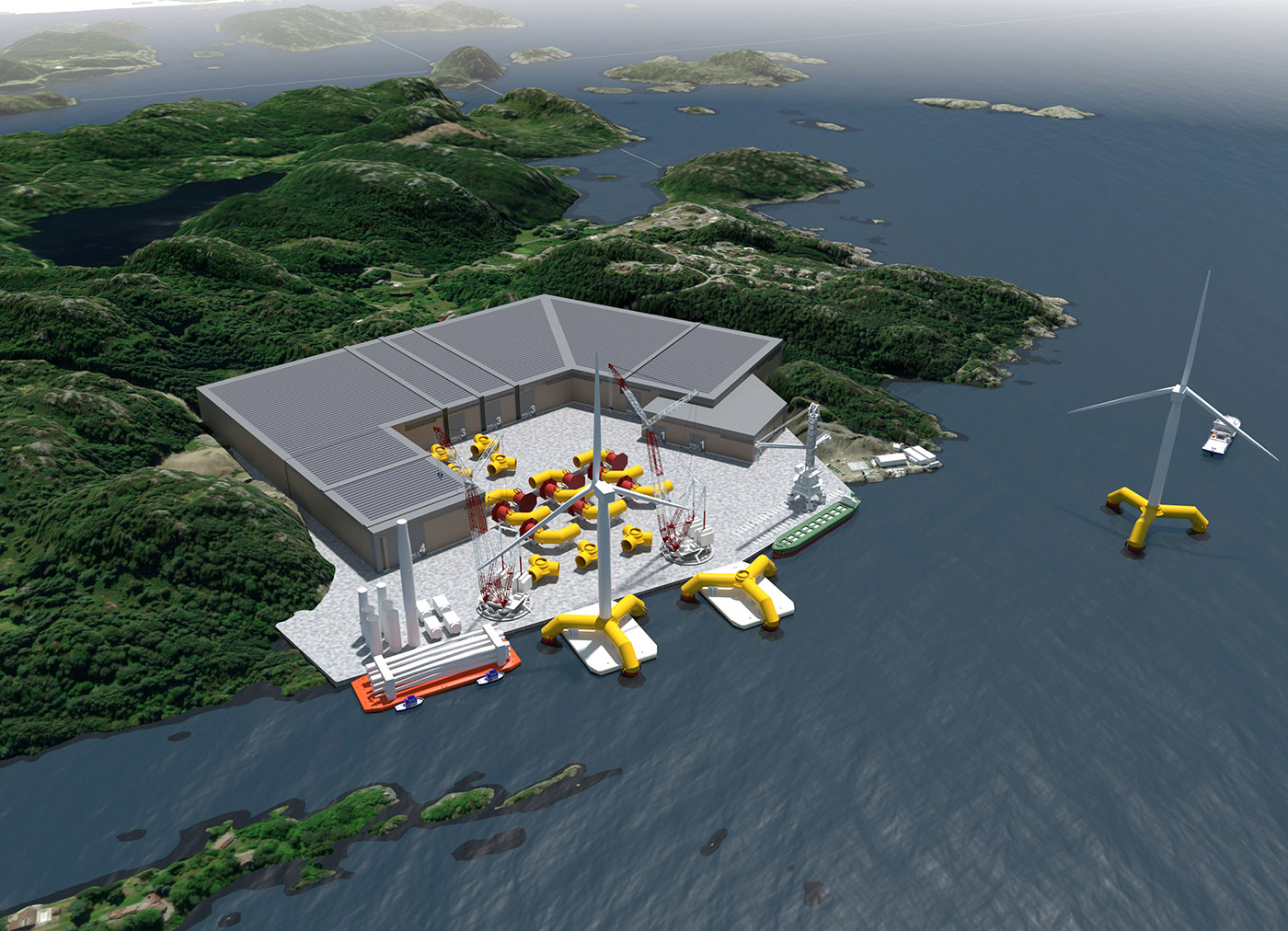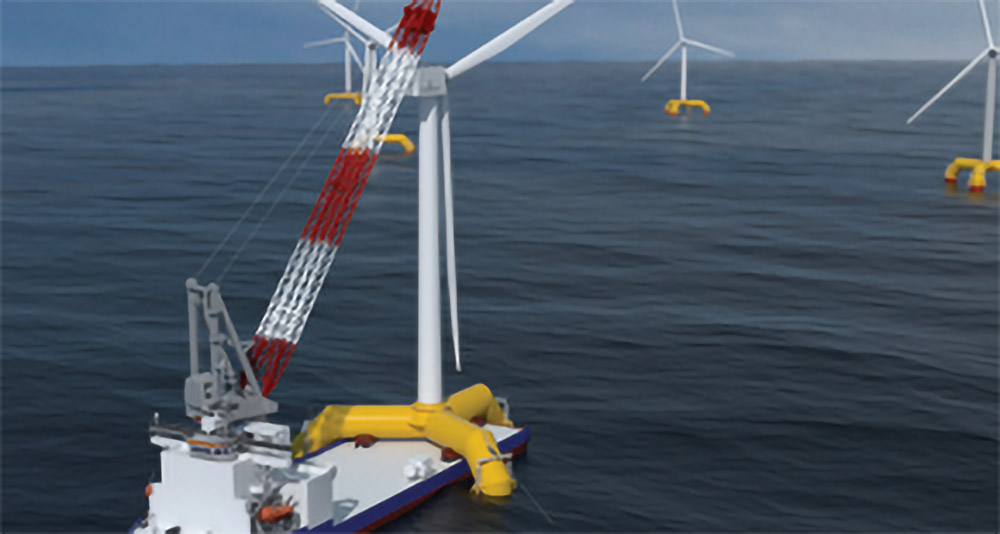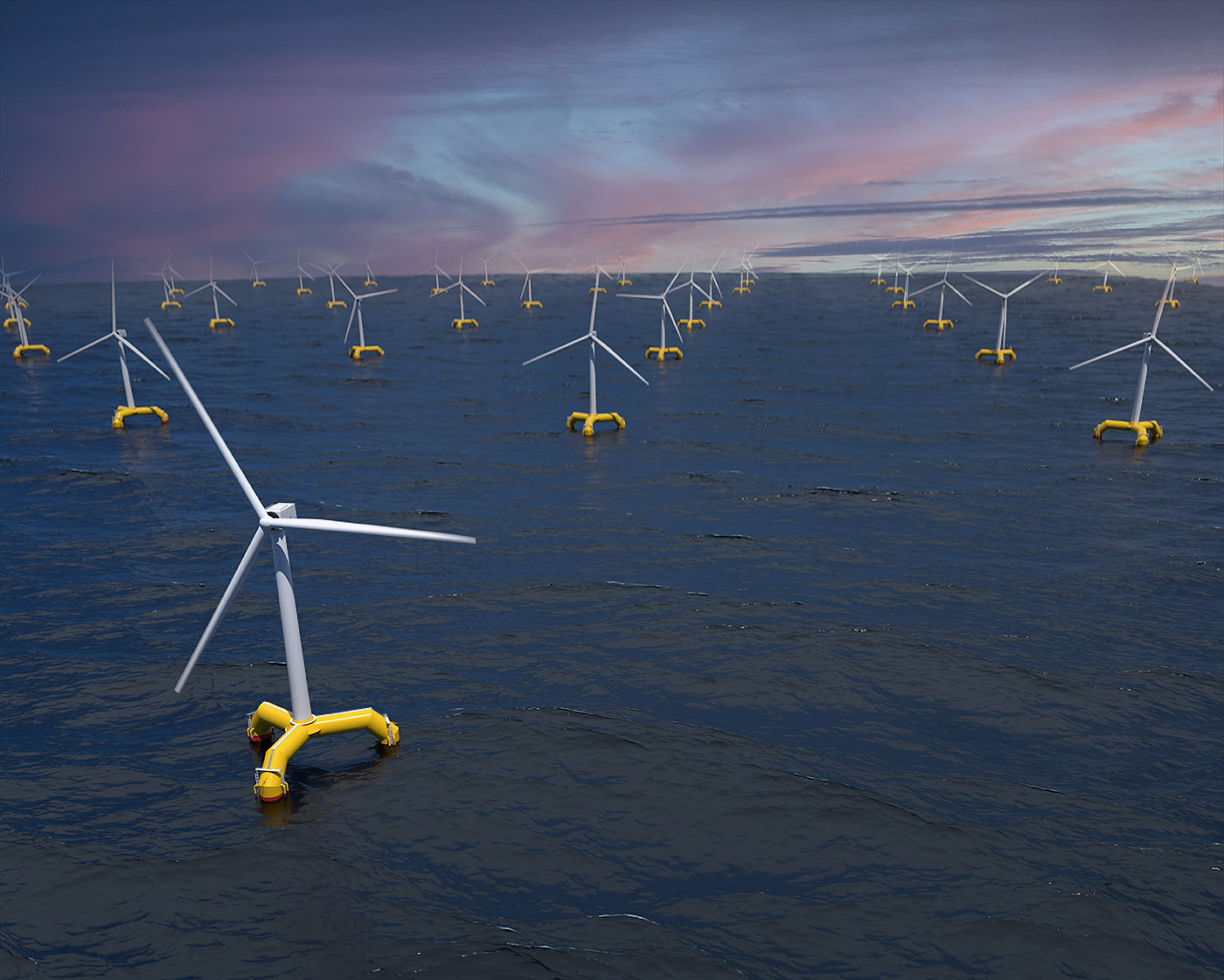In the UK, concessions for 17.9 GW of floating wind have already been awarded and the Norwegian government has plans for thirty GW of offshore wind power by 2040, seventy-five percent of which will be floating. If all of these are 15 MW units, the world could see 2,000 new floating offshore wind turbines (FOWTs) being installed yearly.
The FOWT industry is in its infancy with only a few turbines in operation. The current Levelized Cost of Energy (LCOE) of FOWTs is high and the industry continues to be dependent on government funding to develop offshore wind farms.
Ingvar Apeland, CEO of Ocean Ventus (major owner: the J.J. Ugland Group) aims to make the FOWT industry profitable without government funding and ensure Ocean Ventus is an attractive alternative for investors in renewables.
“Based on our deep knowledge and decades of experience of designing floating units for the oil and gas industry, our engineers have designed a substructure for FOWTs that is lighter and more efficient than any other known FOWT design. The main capital expenditure in FOWT substructure design is related to weight and fabrication cost. Ocean Ventus has designed a substructure that is approximately forty percent lighter than competing solutions, and the starting point is subsequently forty percent less cost.”
Based on our deep knowledge and decades of experience of designing floating units for the oil and gas industry, our engineers have designed a substructure for FOWTs that is lighter and more efficient than any other known FOWT design.
Ingvar Apeland, Chief Executive Officer of Ocean Ventus
Apeland believes the FOWT industry must change dramatically and mirror the ‘monopile’ industry standard used for bottom-fixed wind turbines.
“New and efficient production facilities need to be built,” says Apeland. “Our Ocean Ventus Giga-factory is fully automated and dedicated to producing Ocean Ventus substructures at a rate of one per week. A letter of intent is in place for the first factory in Norway and the fabrication concept is scalable and applicable globally.”
“Assembly of Ocean Ventus FOWTs takes place on dedicated barges,” Apeland explains.
“Assembly is carried out in an environmentally friendly and sustainable manner without the need for large areas of land behind quay fronts – this allows for assembly at otherwise inaccessible locations. Prefabrication and assembly at the same location minimizes transportation costs and emissions.”
Service and repair of FOWTs are expensive for wind farm operators. Today, turbines have to be towed back to shore for heavy maintenance, increasing costs and leading to loss of revenue.
“Ocean Ventus’ specially designed service vessel can handle the heaviest maintenance and repair jobs in the field without having to disconnect the FOWT from its moorings and power cable, thus reducing operating expenses,” concludes Apeland.
The Ocean Ventus design is significantly reducing the levelized cost of electricity (LCOE), and is now being considered for several wind farm development projects.







